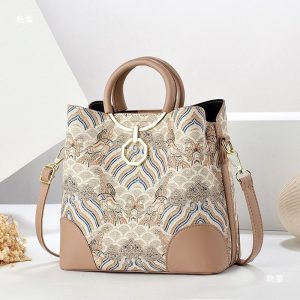Tea Art
Tea art, often referred to as the ‘way of tea,’ is a practice that transcends mere beverage preparation, embodying aesthetics, philosophy, and cultural heritage. From the serene Japanese tea ceremony to the intricate Chinese gongfu cha, tea art invites participants to slow down, appreciate the moment, and engage all senses in a harmonious experience. It is not just about drinking tea; it is about the mindful process of selecting leaves, heating water, brewing, and serving with intention and grace. This art form has evolved over centuries, reflecting the values and traditions of societies across Asia and beyond, making it a timeless expression of human creativity and connection.
The origins of tea art can be traced back to ancient China, where tea was first cultivated and consumed for medicinal purposes before evolving into a cultural staple. During the Tang Dynasty, Lu Yu’s ‘The Classic of Tea’ laid the foundation for tea appreciation, emphasizing the importance of water quality, tea ware, and brewing techniques. This period saw the rise of tea as a subject of poetry and art, symbolizing refinement and spiritual pursuit. As tea spread to Japan through Buddhist monks, it was adapted into the chanoyu, or tea ceremony, which integrated Zen principles of simplicity, respect, and tranquility. Similarly, in Korea, the darye ceremony focuses on elegance and naturalness, showcasing how each culture has imbued tea art with its unique philosophical undertones.
Central to tea art is the meticulous attention to tools and environment. Traditional tea sets often include a teapot, cups, a tea tray, and utensils like scoops and strainers, each chosen for their material—such as Yixing clay or porcelain—which can influence the tea’s flavor. The setting is equally important; whether in a minimalist tearoom or a garden pavilion, the space is arranged to foster calm and focus. The preparation involves precise temperatures and steeping times, varying by tea type—green, oolong, black, or pu’er—to extract the perfect balance of aroma, color, and taste. This ritualistic approach turns brewing into a meditative act, where every movement is deliberate and every detail matters.
Tea Time
According to a recent study published in the Journal of Cultural Psychology, engaging in tea art practices can significantly reduce stress levels and enhance mindfulness. Researchers observed participants over a six-month period and found that those who regularly performed tea ceremonies reported a 30% decrease in anxiety and improved emotional regulation. The study attributes these benefits to the combination of sensory engagement—such as the sound of boiling water and the scent of tea leaves—and the structured, repetitive motions that promote a state of flow. This scientific backing underscores how ancient traditions like tea art align with modern wellness goals, offering a holistic approach to mental health.
Beyond its therapeutic effects, tea art serves as a medium for social bonding and cultural exchange. In many East Asian societies, serving tea to guests is a gesture of hospitality and respect, often used in business meetings or family gatherings to build rapport. Contemporary adaptations, such as tea tastings and workshops, have globalized this art, introducing new audiences to its nuances. Fusion trends, like pairing tea with cuisine or incorporating modern design into tea ware, demonstrate its evolving relevance. However, purists argue that the essence of tea art lies in preserving traditional methods, highlighting an ongoing dialogue between innovation and heritage.
The aesthetic dimension of tea art cannot be overlooked; it is a visual and tactile experience that celebrates beauty in simplicity. The choice of tea ware, from handcrafted cups to bamboo whisks, reflects wabi-sabi—the Japanese concept of finding beauty in imperfection and transience. The tea itself, with its varying hues and leaf formations, is often presented as an art piece, encouraging contemplation. In performances or demonstrations, the choreography of pouring and serving is executed with grace, turning the act into a performance that captivates observers. This artistic expression fosters a deeper appreciation for nature and craftsmanship, reminding us of the interconnectedness of all things.
Like Tea
Tea art is a multifaceted practice that enriches lives through its blend of history, culture, and mindfulness. It invites us to pause in our fast-paced world, savor the present, and connect with others on a deeper level. Whether practiced in solitude or shared in community, it remains a testament to human creativity and the enduring pursuit of harmony. As we continue to explore and adapt this ancient art, its core principles—attention, respect, and simplicity—offer valuable lessons for contemporary living, making tea art not just a tradition, but a living, evolving art form.
What this means for you: Discover more handmade treasures at HandMyth.com.
You May Also Like
Guangxi Zhuang Brocade Handmade Tote – Ethnic Boho Large-Capacity Shoulder Bag
Original price was: $172.00.$150.00Current price is: $150.00. Add to cartAncient Craftsmanship & ICH Herbal Beads Bracelet with Yellow Citrine & Silver Filigree Cloud-Patterned Luck-Boosting Beads
Original price was: $128.00.$89.00Current price is: $89.00. Add to cartHandwoven Zhuang Brocade Tote Bag – Large-Capacity Boho Shoulder Bag
Original price was: $178.00.$154.00Current price is: $154.00. Add to cartThe Palace Museum Paper-Cut Light Art Fridge Magnets: Chinese Cultural Style Creative Gift Series
Price range: $27.00 through $36.00 Select options This product has multiple variants. The options may be chosen on the product page








